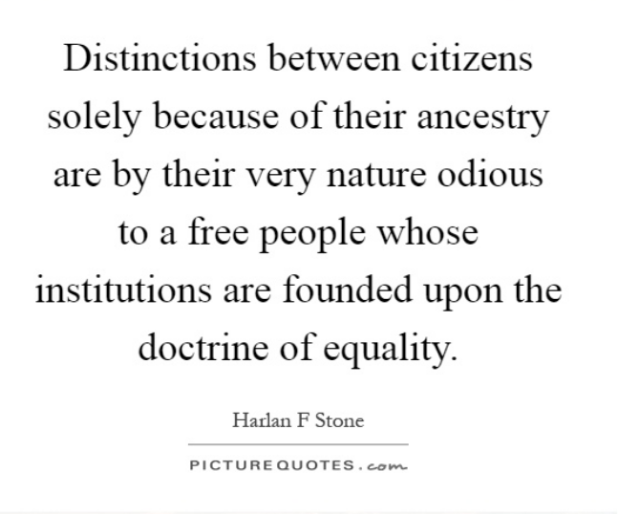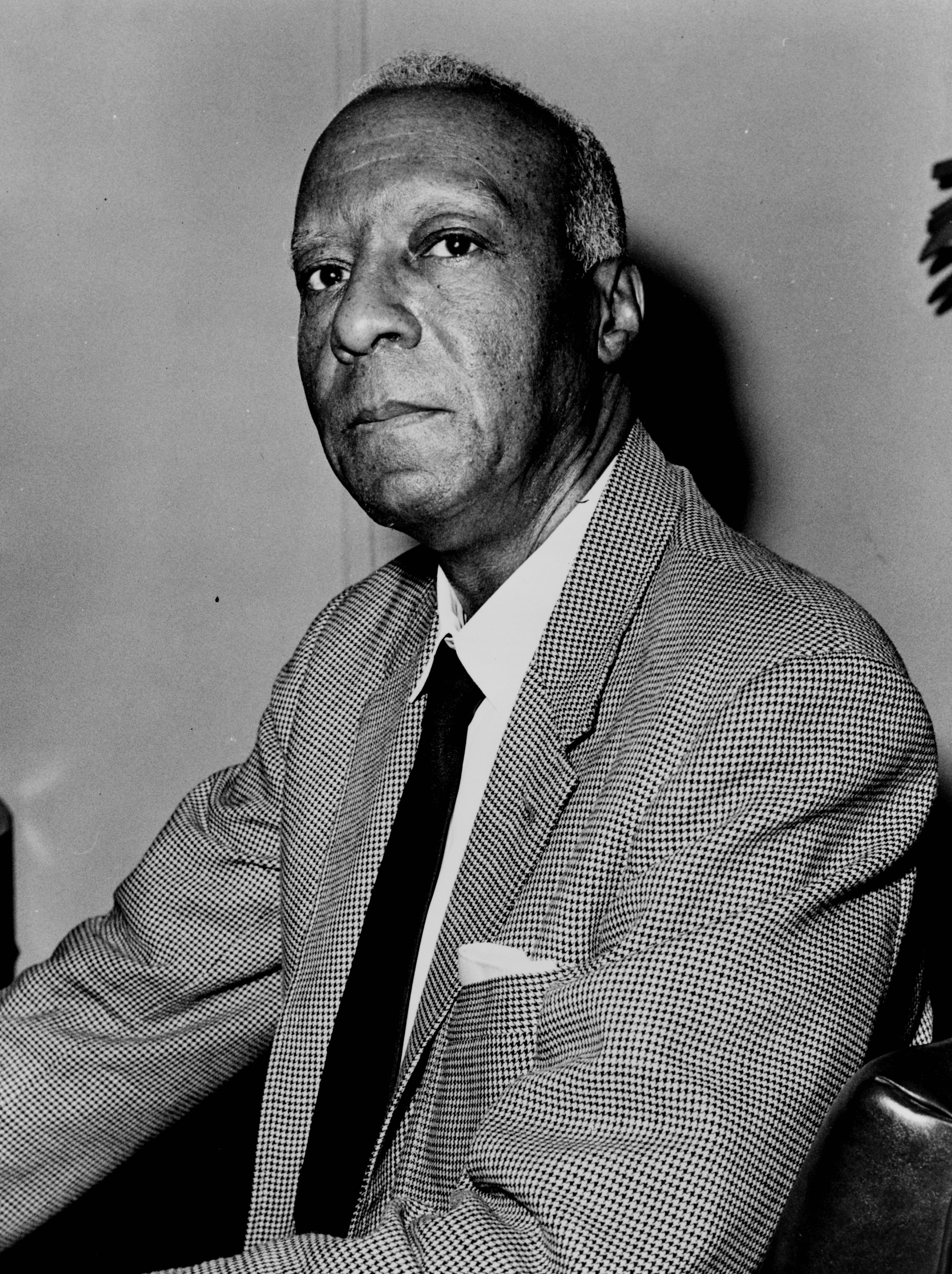
A. Philip Randolph in 1925 organized and led the Brotherhood of Sleeping Car Porters, the first predominantly African-American labor union. In the early Civil Rights Movement and the Labor Movement, he was a voice that would not be silenced. His continuous agitation with the support of fellow labor rights activists against unfair labor practices in relation to people of color eventually led President Franklin D. Roosevelt to issue Executive Order 8802 in 1941, banning discrimination in the defense industries during World War II. The group then successfully pressured President Harry S. Truman to issue Executive Order 9981 in 1948, ending segregation in the armed services. One has to wonder if this fueled the power grab of the 1940’s by the federal judiciary. See: America’s Fail From Democracy to Oligarchy.
In 1954 the Brown v. Board of Education decision is regarded as having sparked the modern civil rights era when the Supreme Court rules deliberate public school segregation is illegal.

In 1954, Charles “Sherrod first participated in sit-ins at white churches with the goal to desegregate them.[1] He was a key member and organizer of the Student Nonviolent Coordinating Committee (SNCC) during the Civil Rights Movement. He became the first SNCC field secretary and SNCC director of southwest Georgia.[2] His leadership there led to the Albany Movement. He also participated in the Selma Voting Rights Movement and in many other arenas of the 1960s movement era.[3]

In 1955 Rosa Parks refuses to give up her bus seat to a white man. “Parks’ act of defiance and the Montgomery bus boycott became important symbols of the civil rights movement. She became an international icon of resistance to racial segregation. She organized and collaborated with civil rights leaders, including Edgar Nixon, president of the local chapter of the NAACP; and Martin Luther King, Jr., a new minister in Montgomery Alabama who gained national prominence in the civil rights movement.
At the time, Parks was secretary of the Montgomery chapter of the NAACP. She had recently attended the Highlander Folk School, a Tennessee center for training activists for workers’ rights and racial equality.”
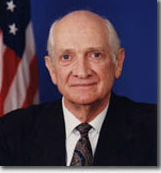
In 1956 Republican Congressman Jack Brooks would refuse to sign The Declaration of Constitutional Principles (known informally as the Southern Manifesto) a document written in February and March 1956, originally authored by Strom Thurmond and completed by Richard Russell in the United States Congress, in opposition to racial integration of public places. The manifesto was signed by 101 congressmen (99 Southern Democrats and two Republicans) from Alabama, Arkansas, Florida, Georgia, Louisiana, Mississippi, North Carolina, South Carolina, Tennessee, Texas, and Virginia.
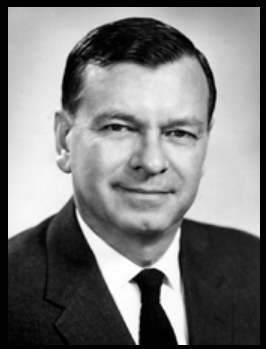
“July, 23, 1956 No Senator from the South is so well equipped or so zealous to become the head and front of a sustained fight for segregation. ” as former Governor of Georgia Senator Herman Talmadge. “He is hampered by no entangling alliances. He does not have to pull his punches. He is committed exclusively to the preservation of what he would call “the Southern way of life.” Any changes which Washington may bring are likely to accentuate his single-mindedness and make him the choice and master spirit of racial reactionism in the Senate. His program of Southern solidarity advanced in You and Segregation will have a sounding-board in his Senate activities.” [4]

November 1960 and former Vice President Richard M. Nixon loses Presidential election to Senator John F. Kennedy of Massachusetts.
February 1, 1960, Lunch counter sit-in by four college students in Greensboro, N.C. begins and spreads through the South. On April 17, 1960, the Student Non-Violent Coordinating Committee (SNCC) is founded by Ella Baker
1961, The Congress of Racial Equality (CORE) organizes Freedom Rides into the South to test new interstate Commerce Commissions regulations and court orders barring segregation in interstate transportation. Riders are beaten by mobs in several places, including Birmingham and Montgomery, Alabama.[5]
Charles Sherrod dropped out of college to become a full-time civil rights activists and member of the Student Nonviolent Coordinating Committee (SNCC). A supporter of racial integration, he recruited white as well as black members to assist with voter registration efforts. In 1961 he was among one of four students, along with Diane Nash, J. Charles Jones, and Ruby Doris Smith, to drop out of college to become a full-time civil rights activists and members of SNCC. When the four students arrived in Rock Hill, they almost immediately engaged in sit-ins to fight back against segregation. After only one day in Rock Hill all four of the college students were arrested because of a sit-in they participated in, at a local diner. Like many activists, the students at the time chose jail with bail in an attempt to overcrowd the jails. They were sentenced to 30 days hard labor, however, Charles Sherrod did not take bail. Charles Sherrod was one of the first to practice the “jail- no bail” strategy.[6] [7 Student Nonviolent Coordinating Committee]

Tom Hayden’s “introduction to virulent southern racism came in 1961 when he ventured to Albany, Georgia, first to write an article about the Deep South organizing done by the Student Nonviolent Coordinating Committee [SNCC] and, second, to become a freedom rider on a train to Albany that December.
It was then he met, and came to admire, a brave young civil rights worker named Charles Sherrod, whom everyone in the movement simply called “Sherrod.” Albany was a segregated town near Plains, Georgia, and the home of Hamilton Jordan who went on to become Jimmy Carter’s chief of staff. Sherrod was the kind of front-line young militant who eventually brought about the New South of Carter, Bill Clinton and Al Gore, among others. Sherrod had to face violence, and the possibility of death, every day in his effort to mobilize young people and their parents against the suffocation of fear.

Sherrod, and his equally committed wife Shirley, made a conscious decision to stay in rural Georgia long after the voting rights laws were passed and the national media departed. I left Albany after my two brief and harrowing experiences in 1961, and never returned until I spoke at commemoration of the Albany civil rights movement a few years ago. The Sherrods were still there. She was engaged in programs supporting rural farmers, while he had served on the city council and was a minister in a nearby state prison. There were 500 people at the event, the stalwarts of the past.
January, 1962 the Albany movement responded with an intensified boycott of city buses, and the bus company was forced out of business.
So Shirley Sherrod’s life cannot be reduced by a dishonest and amoral right-wing blogger into a few seconds of videotape 25 years old. She is one of many thousands who had the force of character to face racist abuse, and seemingly immovable state power, when they were demonized and disenfranchised. They were the trees standing by the water, and they would not be moved. They tried to bring their morality to politics, not accept the politics of Machiavelli.” [8]
Albany now began a new round of encounters between Negro demands and official intransigence. A few days after the bus incident, Sherrod and Charles Jones were arrested for sitting in the Trailways lunchroom. Shortly after that the City Commission turned down the Albany Movement’s petition for a redress of grievances. And in March the trial of the original “Freedom Riders” arrested on December 10 began.
As Charles Sherrod entered the courtroom to attend that trial, he walked to the “white section” in the front , and was immediately knocked to the floor by Chief Deputy Sheriff Lamar Stewart, who then pulled him back to the rear of the courtroom. When Bob Zellner, Tom and Sandra Hayden, and Per Laursen sat down next to Sherrod in the “Negro section,” deputies pounced on them and dragged them out of the courtroom. Judge Carl E. Crow, watching all of this, told newsmen, “The officers were enforcing a rule of the court.” SNCC The Abolitionist Pg 134, 35

1962, The United Farm Workers Union, under the leadership of Cesar Chavez, organizes to win bargaining power for Mexican Americans.
“James Meredith becomes the first African American student admitted to the University of Mississippi.” [9]
In April 1962 there was more trouble. Dr. Anderson, Slater King, Emanuel “Bo” Jackson, and Elijah Harris, four leaders of the Albany Movement, were found guilty of “disorderly conduct” for picketing downtown as part of a general boycott of stores which did not hire Negro employees. Also, Charles Jones, Cordell Reagan, and two others were sentenced to sixty days on work gangs for refusing service. And twenty-six more people were arrested in lunch counter sit-ins.

July 1962, national attention came to Albany again when Martin Luther King, Jr., and Ralph Abernathy, called back to stand trial for leading the parade in December, were found guilty in Recorders Court and sentenced to forty-five days. Defense Attorney Donald Hollowell asked Judge Durden for legal citations on which his decision was based. He said he didn’t have any, but that it was based on “general research of the law.”
With King’s arrest, Washington officialdom got busy as it had never done before in the Albany crisis, and somehow, through the payment of the fine by an unidentified man, King and Abernathy were released. They had wanted to stay in jail to continue dramatizing the Albany situation, but now they reluctantly left. Abernathy told a mass meeting that night: “I’ve been thrown out of lots of places in my day, but never before have I been thrown out of jail.”
In November 1962 a special election was held in Massachusetts to fill the Senate seat vacated by John F. Kennedy who’d become President. The seat was won by his 30 year old brother Edward Moore “Ted” Kennedy. Ted Kennedy was re-elected to a 6 year term in 1964 and later re-elected seven more times.

1963 June 11, President John F. Kennedy in his Report to the American People on Civil Rights asked for legislation “giving all Americans the right to be served in facilities which are open to the public—hotels, restaurants, theaters, retail stores, and similar establishments”, as well as “greater protection for the right to vote”. Kennedy delivered this speech following the immediate aftermath of the Birmingham campaign and the growing number of demonstrations and protests throughout the southern United States.
Kennedy was moved to action following the elevated racial tensions and wave of black riots in the spring of 1963. Republican Congressman Jack Brooks of Texas as ranking member of the House Judiciary Committee would help write the Civil Rights Act”

“Brooks was elected to the U.S. Congress in 1952, where he served for the next five decades. As a member of the influential Texas congressional delegation, Brooks became a close friend of powerful House Speaker Sam Rayburn and Senate Majority Leader Lyndon B. Johnson during the 1950s. He was a regular member of Speaker Rayburn’s “Board of Education,” a close group of congressional supporters.
June 20,1963, President John F. Kennedy meets with civil rights leaders, Future Congressmen from Georgia, John Lewis, Rev Martin Luther King, Jr. Rabbi Joachim Prinz, Rev. Eugene Carson Blake, and A. Philip Randolph at the White House in an attempt to call off the March on Washington scheduled for August.

A. Philip Randolph was the head of the March on Washington, which was organized by Bayard Rustin, on August 28, 1963 the March on Washington took place at which Reverend Martin Luther King, Jr. delivered his “I Have A Dream” speech. In the early Civil Rights Movement and the Labor Movement. The purpose of the march was to advocate for the civil and economic rights of African Americans and show support for President Kennedy’s Civil Rights Act. In front of the Lincoln Memorial, Martin Luther King would deliver his historic “I have a Dream” speech in which he called for an end to racism. The march on Washington is credited with helping to pass the Civil Rights Act.

On November 22, 1963, Brooks rode in the motorcade carrying President John F. Kennedy, Vice President Johnson, and many members of the Texas congressional delegation through downtown Dallas. Following Kennedy’s assassination, Brooks was on Air Force One for Lyndon B. Johnson’s swearing-in. He then flew with the new president, Lady Bird Johnson, and Jacqueline Kennedy back to Washington, D.C. During the Johnson Administration, Brooks remained a strong supporter of President Johnson and his legislative program. Throughout Johnson’s presidency, Brooks and his wife Charlotte dined with the Johnson family at the White House on a weekly basis.” [10]
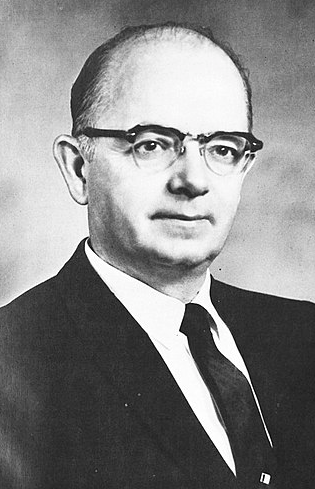
Lester Maddox’s refusal to adjust to changes following the passage on July 2, 1964 of the Civil Rights Act manifested itself when he filed a lawsuit to continue his segregationist policies. Maddox said that he would close his restaurant rather than serve African Americans. An initial group of black demonstrators came to the restaurant but did not enter when Maddox informed them that he had a large number of black employees. On July 3, 1964 day after passage of the Civil Rights Act more African Americans attempted to enter the restaurant. Maddox confronted the group with a bare pickaxe handle.[11] Maddox provides the following account of the events:

Mostly customers, with only a few employees, voluntarily removed the twelve Pickrick Drumsticks [a euphemism for pickaxe handles] from the nail kegs on each side of the large dining room fireplace. They had been forewarned by the arrival of Atlanta’s news media of an impending attempted invasion of our restaurant by the racial demonstrators and once the demonstrators and agitators arrived, the customers and employees pulled the drumsticks [pickaxe handles] from the kegs and went outside to defend against the threatened invasion.12]
Photo from CNN.com Inside Politics June 25, 2003
Marker at the spot of the Pickrick at Georgia Tech
The “invasion” Maddox referred to above was three black Georgia Tech students who had asked to be seated.[13]
Maddox gained the approval of segregationists by leasing and then selling the restaurant to employees rather than agreeing to serve black customers. He claimed that the issue was not hostility to blacks, but constitutional property rights. He even built a monument to “private property rights” near the restaurant.[14]
The Civil Rights Digital Library at the University of Georgia contains the following account of the closing of his restaurant:

Maddox closed the Pickrick on August 13, and reopened the business on September 26 as the Lester Maddox Cafeteria, where he pledged to serve only “acceptable” Georgians. During a trial for contempt of court on September 29, Maddox argued against the charges because he was no longer offering service to out-of-state travelers or integrationists. On February 5, 1965 a federal court ruled that Maddox was in contempt of court for failing to obey the injunction and assigned fines of two hundred dollars a day for failing to serve African Americans. Maddox ultimately closed his restaurant on February 7, 1965, rather than integrate it; he claimed that President Lyndon Johnson and communists put him out of business.[15]
The building was purchased by Georgia Tech in 1965; it was used for many years as the placement center, and was later known as the Ajax building.[16][17] It was demolished in May, 2009.
March 15, 1965 a black farmer Hosie Miller and Baptist deacon died ten days after he was shot during a livestock dispute with Cal Hall, a white neighbor, in Newton, Georgia.
Shirley Sherrod, revealed her version of the events shortly after the controversy surrounding her resignation as Georgia State Director of Rural Development for the United States Department of Agriculture.[18][19][20] Shirley [Millers Daughter] reported that Miller, who owned 500 acres (2.0 km2) in Baker County, Georgia on which he grew corn, cotton and peanuts, would sometimes argue with Hall, whose cows would wander into her family’s pasture.[21] She said that Hall confronted Miller about six or seven cows Miller claimed belonged to him.[22][23] According to Sherrod, when Miller told Hall that they could settle the matter in court, Hall shot Miller in front of three witnesses.[24][25]
The shooting occurred on the night of March 15, 1965 and, according to the death certificate, Miller died on March 25 from gunshot wounds to his chest, abdomen and liver.[26][27] Hall, who claimed he killed Miller in self-defense, was charged at least three times in connection with Miller’s death and a grand jury declined to prosecute him each time.[28]
Civil rights attorney C.B. King represented the Miller family in a civil suit against Hall seeking monetary damages for lost income, medical, and funeral costs.[29] King, asserting that the jury panel was predominately white despite the 1960 census showing that the majority of the county’s over 2,000 residents were black, attempted to have the Baker County Board of Jury Commissioners redraw jury lists.[30] Judge Emeritus Carl E. Crow went forward with the proceedings and on September 12, 1966, the jury found in favor of Hall.[31]
Grace Miller, Hosie Miller’s wife, said she was distantly related to Hall.[32] Hall died in 1976.[33]
In 1966, Charles Sherrod left the SNCC after its recently elected chairman Stokely Carmichael expelled white members. He moved north, to New York City, where he received his master’s degree in sacred theology from the Union Theological Seminary. He then returned home to direct the Southwest Georgia Project for Community Education with Shirley Sherrod. In 1969, Sherrod, his wife Shirley, and some other members of the Albany Movement helped pioneer the land trust movement in the U.S.,[34][35] co-founding New Communities, a collective farm in Southwest Georgia modeled on kibbutzim in Israel. [36]
“In 1969, New Communities received a planning grant from Office of Economic Activity OEO the agency responsible for administering most of the War on Poverty programs created as part of United States President Lyndon B. Johnson‘s Great Society legislative agenda. New Communities was encouraged to expect substantial funding for implementation, but Governor Lester Maddox would not permit further funds for the group to come into the state.” [37]

During this period, Jimmy Carter was motivated to oppose the political climate of racial segregation and support the growing civil rights movement. He became an activist within the Democratic Party. Carter was in favor of racial tolerance and integration—at one point, the local White Citizens’ Council boycotted his peanut warehouse when he refused to join them—but he often kept those feelings to himself to avoid making enemies. By 1961 he was a prominent member of the community and the Baptist Church as well as chairman of the Sumter County school board, where he began to speak more loudly in favor of school integration.[38] A state Senate seat was opened by the dissolution of Georgia’s County Unit System in 1962; Carter announced his run for the seat 15 days before the election. Rosalynn, who had an instinct for politics and organization, was instrumental to his campaign. The initial results showed Carter losing, but this was the result of fraudulent voting orchestrated by Joe Hurst, the Democratic Party chairman in Quitman County, with the aid of the Quitman County sheriff.[39] Carter challenged the results; when fraud was confirmed, a new election was held, which he won.[40] The civil rights movement was well underway when Carter took office. He and his family had become staunch John F. Kennedy supporters.
In 1966 Carter ran for Governor of Georgia the result was a sharp blow to Carter, who was left deeply in debt. His attempt to rescue the race from Callaway had resulted in the unlikely election of the segregationist Lester Maddox, which he considered an even worse outcome.[41] Carter served in the Georgia State Senate, and in 1970, he was elected as Governor of Georgia, defeating former Governor Carl Sanders in the Democratic primary on an anti-segregation platform advocating affirmative action for ethnic minorities. That same year Lester Maddox would win election to Lieutenant Governor of Georgia.

From these historic accounts of history, it’s known, Charles & Shirley Sherrod were founding members in the Student Nonviolent Coordinating Committee, Charles spent thirty days in jail protesting a sentence for participating in a lunch counter sit-in in Rock Hill South Carolina, Tom Hayden ventured to Albany Georgia in December 1961 to become a freedom rider on a train to Albany where he met Charles Sherrod. Charles Sherrod’s Freedom ride activism that December brought him to a court appearance before Judge Carl E. Crow.
In 1964 a group of black demonstrators came to the restaurant of Lester Maddox but did not enter when Maddox informed them that he had a large number of black employees. By any chance did SNCC Charles and Shirley Sherrod precipitate, or participate in the sit-in of Maddox Pickrick restaurant? Lester Maddox closed the restaurant on February 7, 1965, rather than integrate it. On March 15, 1965, a black farmer and Shirley Sherrod’s father Hosie Miller a Baptist deacon died ten days after he was shot during a livestock dispute with Cal Hall, a white neighbor. Every attempt to hold Hall accountable for the murder was blocked by whites and the same judge Sherrod had faced regarding the December Albany freedom rides in which Martin Luther King and Ralph Abernathy had participated Judge Carl E. Crow.
In 1966, Charles & Shirley Sherrod were married and left the SNCC after its recently elected chairman Stokely Carmichael expelled white members and Jimmy Carter lost his bid for Governor to Lester Maddox. At the time John Lewis was the youngest of the “Big Six” leaders as chairman of the Student Nonviolent Coordinating Committee. Had the run in at the Pickrick with Lester Maddox resulted in the murder of Shirley’s father, the expelling of white members in the SNCC, Jimmy Carter’s losing to Lester Maddox. Did Charles and Shirley depart to New York where he pursued a master’s degree in sacred theology as a non violent response to these events?
Albany a segregated town between Plains and Newton Georgia, home of Hamilton Jordan, Jimmy Carter, Charles an Shirley Sherrod, and Hoosie Miller respectfully. Carter a farmer in Plains Georgia and prominent member of the Baptist Church. Charles Sherrod a baptist minister first participated in sit-ins at white churches with the goal to desegregate them. Hoosie Miller Shirley’s father a black farmer and baptist deacon. Jimmy Carter a baptist politician, a staunch supporter of Civil Rights, and affirmative action. Charles a baptist minister with the SNCC involved in voter registration and non violent activism. Is it likely that Charles and Shirley worked to get out the vote in support of Jimmy Carter’s political efforts?
Having returned to Georgia in 1969 and after the murder of Martin Luther King did Charles and Shirley work on getting out the vote for Jimmy Carter’s winning bid for Governor in 1970? Is there any question Jimmy Carter, Lester Maddox, Charles and Shirley Sherrod, Hoosie Miller, John Lewis, and the minister from Georgia Martin Luther King were all acquainted?
In 1969 did the relevant past of these events play a significant role in Lester Maddox blocking the Sherrod’s funding for the development of New Communities? Do you think perhaps once Jimmy Carter became Governor he attempted to help the Sherrods? Did Maddox as Lieutenant Governor stop him?
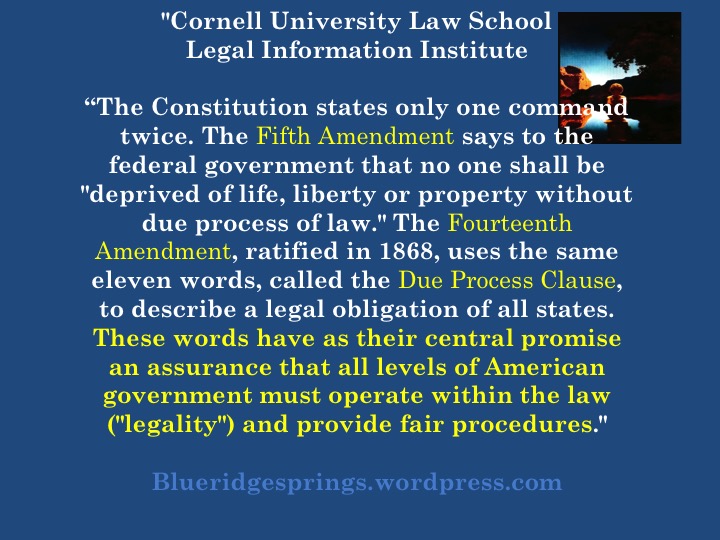
This one battle and its aftermath leads to the elimination of The People’s Constitutional Rights to Due Process by Senator Joe Biden, the Brutus of 1990, turning America into an oligarchy controlled by a Government king selling out to the highest bidder after Citizens United. See post Americas Fail From Democracy to oligarchy.
And if the chance of one battle—that is, a particular cause—has brought a state to ruin, some general cause made it necessary for that state to perish from a single battle. In a word, the main trend draws with it all particular accidents. – Montesquieu.

